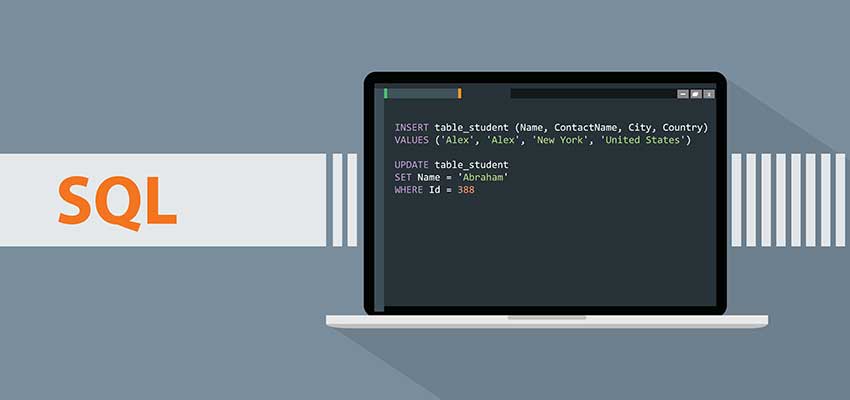Show:
Comparing ORM vs SQL: What To Know
When it comes to data management and storage, databases are used because they guarantee fast and easy data integrity and retrieval of information. Managing applications must include a reliable database to meet your preferences and project requirements.
However, directly dealing with databases from applications can be challenging because of the differences in data structure. Expressing subtleties of entities’ relationships also poses issues. This is why you need a tool which acts as an interface between the data layer and the core application. And the two most common tools available are SQL and ORM.
In this article, you will learn more about SQL and ORM and compare the two, so you can choose the best tool to use for your database management.

What Is SQL?
Structured Query Language (SQL) is a language designed specifically for managing large amounts of data held in an SQL relational database management system. This type of language is commonly known as a procedural programming language.
The main purpose of this procedural programming language is to allow an administrator to have complete control over the information, which needs to be accessed from a database server. This type of language can be used to create a system capable of processing the data at various stages.
But how does SQL differ from ORM? ORM vs SQL is a good topic to discuss, but before the comparison, it is important to know how SQL works.
How SQL Works?
As the different SQL functions are performed, the results are logged in the log file. These logs are then used for tracking what the administrator is doing. The program that creates the log files is called a query engine or query language (QL) application.
These programs can be stored in a database file or on a hard drive. The administrator can view the results from one of these programs by executing a command, such as “EXEC SQL SERVER”.
What Is A Query?
A query is simply a procedure which tells the system what to do – for example, how to collect the necessary data to perform the desired function. The results from a query can be displayed in many different ways. They are typically stored in a log file, created when a query is executed.
There are several types of queries, but each one is used to retrieve the data that the system needs from the database server. The most common type of query is the Normal Query, which is used to retrieve the most basic data from the server. The other types of queries are used to retrieve data of more detailed information.
Some of the more common types of queries that can be performed on a database include:
- Inverted Indexed Query (IJ)
- Inverted Indexed Lookup (IILD)
- Indexed Table Query (OT)
- Reverse Indexed Table Query (RITQ),
- Reverse Lookup on Table
Note: The data extracted is usually stored as a query result. The query used to retrieve the data from the database is called a Data Extractor.
What Is ORM?
Web developers use object relational mappers or ORMs to create an abstraction layer, so that they can work with databases without modifying the object-oriented paradigm, which reduces the burden of adapting to a storage format’s database specifics.

ORM Versus SQL
Hands-On Management
When it comes to hands-on management, SQL is higher than ORM. It is because of the human expertise involved in running queries in data management and retrieval.
It is important to know how to use SQL in order to maximize the benefits and performance of the database. SQL Optimization can be done by learning the various SQL statements which are used in the database. Some of the steps involved in SQL optimization are:
- Inserting: An SQL statement can insert data into a database. The data can be inserted into the database from a file on a file server, or an external device, such as a hard drive, an internet file share, or even a memory stick.
- Selects: Selects are used to retrieve data from the database by different methods, such as by name, column, range or value. These include: Select Statement, Select List and Indexed Index.
- Rows: The most common way to execute queries to retrieve rows from a database is using the Rows Query and Rows Result. The data from each row can be obtained through the Rows Statement.
- Queries: If a database needs to retrieve data from another database, then a query can be used to do this by specifying the name of the data that is required. An example of this would be to perform an SQL query to retrieve the name of the employees in a certain department from a company database. Then, after the data has been retrieved, the query can be executed to retrieve the names of the employees by department.
Level Of Abstraction
What does the level of abstraction mean in programming? This refers to the system’s complexity when it is programmed or viewed. The higher the abstraction level is, the less detail the database contains.
The level of abstraction is higher in ORM as compared to SQL. Abstraction is one of the key principles of ORM, along with inheritance and encapsulation. All of these help to reduce complexity and increase efficiency in managing databases, by hiding the relevant data of an object.
Level Of Complexity
ORM is more complex than SQL because its high level of abstraction, and less hands-on management required. It provides programmers with a greater amount of control over how their software can be used. When a programmer uses the object-oriented programming approach, they can decide how to provide a more structured method of data access and also how to manage a database. This will allow for a more streamlined way of handling a company’s IT infrastructure, and will improve the overall usability of the software.
Conclusion
ORM and SQL are two tools available that web developers can use in database management. When comparing them, SQL has a higher hands-on management than ORM. Because ORM has a higher level of abstraction and more complexity than SQL, less hands-on management is required; this makes data management more efficient.

 Return to Previous Page
Return to Previous Page








